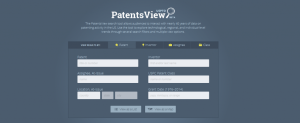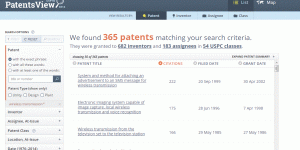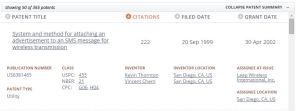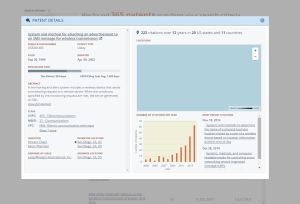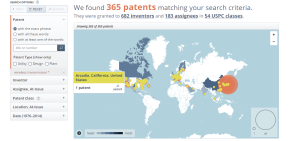The United States Patent and Trademark Office (USPTO) has launched a new patent data analytics and visualization platform called PatentsView that is designed to allow patent researchers and the general public to search and view data on nearly 40 years of patenting activity in the United States.
PatentsView comes equipped with search filters and multiple viewing options that allow users to explore patent filing trends on technological, regional and individual levels. The platform sources its data from public USPTO bulk data files from 1976-2014, linking inventors, their organization, locations and patenting activities.
The PatentsView platform was developed by the USPTO in partnership with USDA, the Center for the Science of Science and Innovation Policy (CSSIP), the University of California at Berkly, Twin Arch Technologies, American Institutes of Research (AIR) and Periscopic. The development of the platform started back in 2012.
PatentsView – Functionality
The PatentsView homepage is designed to present users with all of the platform’s features on a single page. The platform allows users to view search results according to Patent, Inventor, Assignee and Class. The current review was done while viewing search results according to Patent.
Below the viewing options are a set of search fields that enable users to perform searches. The search fields are Patent; Assignee – At Issue; Location – At Issue; Inventor; USPC Patent Class and Grant Date.
Once users are finished filling in the search fields, they have the option of viewing the search results in a list view or map view. As shown in the screenshot above, the buttons for list view and map view are located directly beneath the search fields.
At the bottom of the homepage, PatentsView offers highlighted searches that can help new users start their exploration of the data.
The List View option in PatentsView presents the search results in a simple list. This option lists the search results along with patent title, the number of citations, filed date and grant date. The left-hand side column offers users various search filters to sort the results, like patent, patent type, inventor, assignee at issue, location at issue and date. The top of the list view pages gives a brief summary about the search results, informing users about the total number of patents found matching their search criteria, the number of inventors the patents were granted to, the number of assignees for the patents and the number of USPC classes.
As the screenshot below shows, users also have the option of expanding the patent summary, by clicking on the patent title, which gives additional information on the patents like publication number, patent type, name of the inventor(s), inventor(s) location, assignee name and assignee location. Also, when viewing results in List View, users can choose to view the search results according to Inventor, Assignee and Class, by clicking on the tabs located above the search results.
When users click on a patent title, a new window opens which provides detailed information about the patent including the patent abstract, the number of citations for that patents and most recent citations. Clicking on the patent title opens a Google Patents page detailing the patent in its entirety, enabling the users to study the patent in more detail and download it in PDF format.
The map view presents users with an interactive map of the world, pinpointing locations where the inventors or assignees for the patents are located. Hovering the mouse over a location gives users the name of the location and the number of patents for the inventors or assignees in that location
The List and Map buttons at the top of the search results page allow users to toggle between the two modes of viewing search results.
Have you tried the PatentsView tool? Tell us about your experience in the comments section below!
This post was contributed by Abhishek Tiwari. The Intellogist blog and Intellogist are provided for free by Landon IP, which is a CPA Global company. Landon IP is a major provider of professional services meeting the needs of the IP community, including patent searches; analytics and technology consulting; patent, legal, and technical translations; and information research and retrieval.
Filed under: Items of Interest, Patent Analysis, Patent Search News, Patent Search Systems, Patent Search Tools | Tagged: data visualization, patent analysis, patent analytics, Patent Data, PatentsView, USPTO | 2 Comments »







